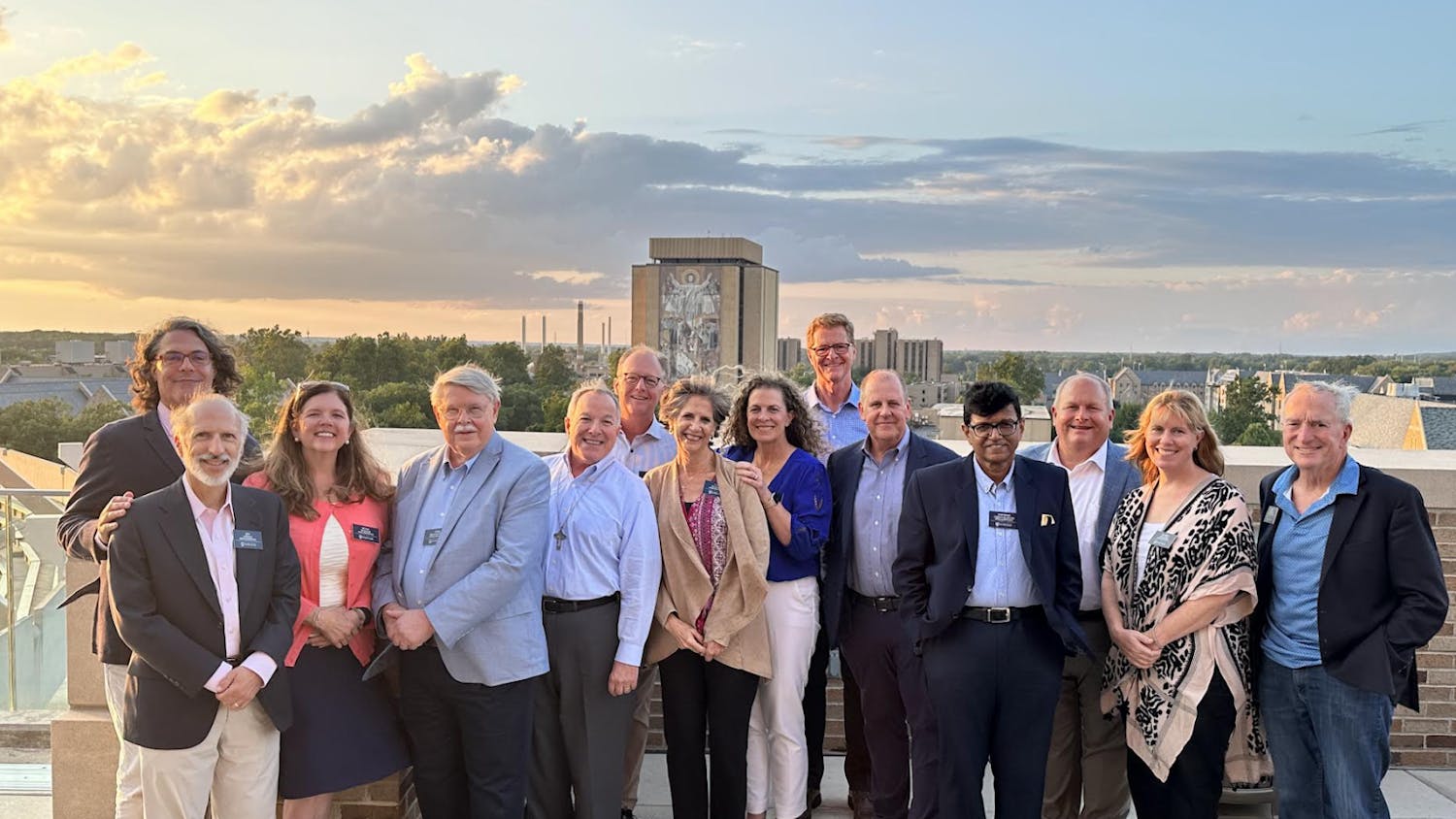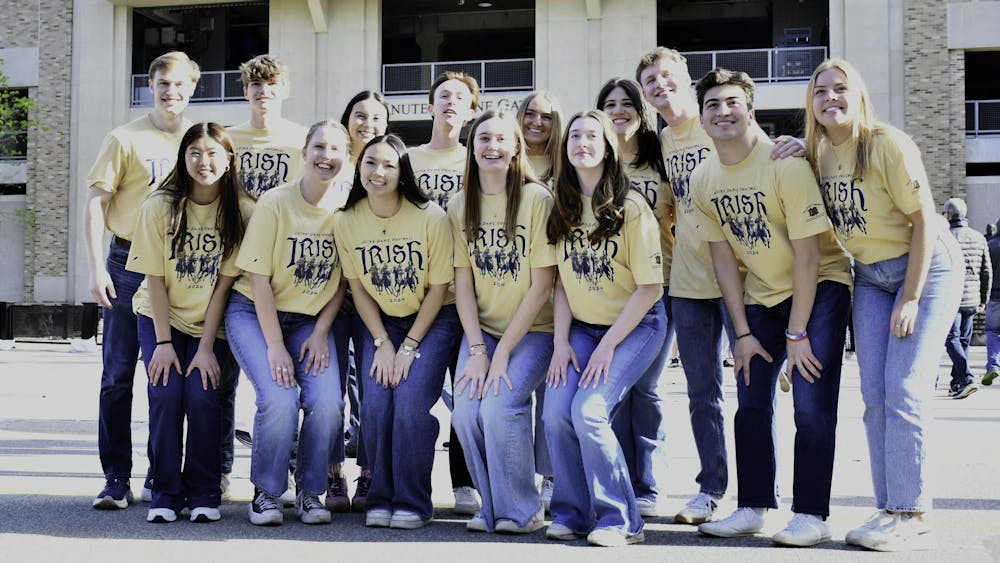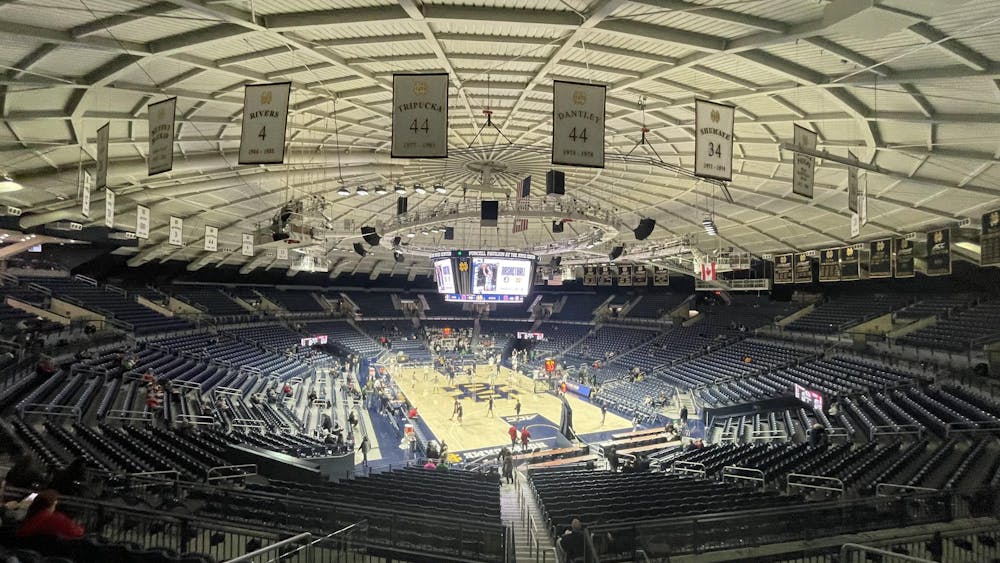While most of campus is buzzing with the frenzy of freshman orientation, the Class of 2015 is not the only set of students settling into their new home under the Dome this weekend.
According to the Office of Undergraduate Admissions, 113 transfer students will take their places in the sophomore and junior classes this fall.

Erin Camilleri, assistant director of the Office of Undergraduate Admissions and the counselor responsible for transfer students, said this year's transfer class increased in their academica profile.
"Just like the first-year students, the entire Notre Dame student body has become more and more competitive," Camilleri said.
Unlike first-year admissions, Camilleri said transfer students are not competing for a set number of seats. However, admissions staff was highly selective as they evaluated nearly 400 transfer applications.
Admitted transfer applicants boasted an average GPA of 3.8 from a variety of challenging institutions, Camilleri said, but exceptional academics may be the only common factor for the transfer class this year.
"Students are coming from all over the country … We don't have any partner universities," Camilleri said. "They're coming to us for a variety of reasons. Some were admitted and chose to go elsewhere, some were not admitted initially, some never applied and later decided Notre Dame was a better fit."
The students' intended majors vary as much as their backgrounds, Camilleri said. While transfers are free to pursue majors in the Colleges of Science, Engineering and Arts and Letters, the latter is especially popular.

"Majors definitely change year to year," she said. "Our [College of Arts and Letters] pre-professional route is very popular. Political science, psychology, economics are all [also] very popular. Those are the ones we see consistently."
In addition to the challenge of joining a new university, transfers often face the possibility of not receiving on-campus.
Jeff Shoup, director of the Office of Residence Life and Housing, said 63 women and 74 men applied for housing in the dorms, but only 20 female and 28 male transfer or readmitted students have been assigned on-campus accommodations so far.
Shoup said the availability of housing for both transfer and readmitted students varies from year to year.
"It fluctuates with on-campus retention, the freshman year numbers and abroad [participation]," he said. "A few of those rooms are those that didn't get picked at room picks, those leftover after the freshmen were assigned, and from people who cancelled [enrollment]. After those, there aren't many leftover rooms."
Transfers are offered on-campus housing based on a lottery system, and Shoup said no consideration is given to how promptly applicants accepted their offers of admission. Like first-year students, transfer students are randomly assigned to available rooms.
"When your lottery number comes up, it's basically, ‘Here's what your assignment is.' When someone declines we just move past them, but for the most part housing is important enough to students that we don't do that often," Shoup said. "We do have some cases where people have difficulty getting out of their leases and have to decline."
Historically, Shoup said transfer students still hoping to move on campus have been able to do so at the semester's end.
"The last several years we've been able to get everyone on second semester that didn't get on fall because there tend to be more students who study abroad in the spring," he said. "We [also] have some students move off, some graduate and some withdraw."
No matter the student's address at Notre Dame, the transfer orientation committee said its members seek to make "home under the Dome" feel real for incoming transfers.
Senior Taylor Popplewell, co-commissioner for Transfer Orientation, said the four-day event provides transfer students with a support system while they find their bearings at a new school.
"I think ‘Transfer-O' is great because it provides transfers a means to acclimate to the campus and to get to know over 110 people going through the same thing they are," Popplewell said. "Transferring is hard in itself, so having that community of people makes it easier."
Some of the highlights of the weekend include a welcome mass, the President's Luncheon, "Football 101" and Indiana Dunes Day.
"At the President's Luncheon, Fr. Jenkins addresses the new transfer class. He [was] actually a transfer himself, and it's an amazing part of the orientation because he's been in our shoes," she said. "We also have academic meetings with our advisors, but then there's also a ton of fun activities like ‘Football 101' where we teach them all the cheers and dances which is great. Then we have a day where we all go to the dunes and just relax for a day and prepare for classes on Tuesday."
During orientation, students are assigned transfer "parents" from the 26 committee members, Popplewell said.
"It's so they have a close-knit connection with a smaller number of people," Popplewell said. "So they have someone to rely on not only in orientation but throughout the year."












